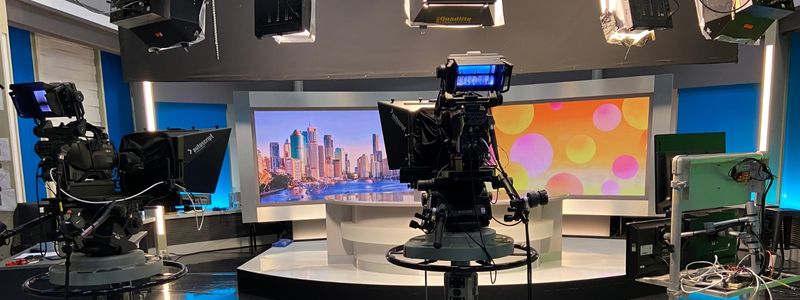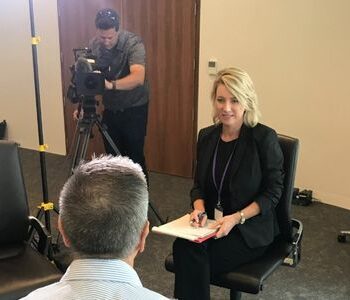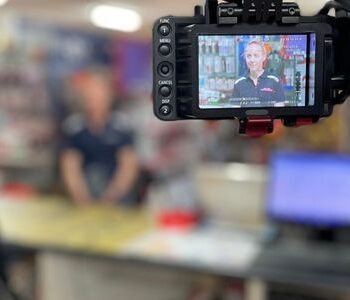Understanding TV Journalism Jargon
If you’ve ever had a friend in media or spoken with journalists at work or in your personal life, you might have heard some of the abbreviations and TV journalism jargon they throw around on the job.
To help you navigate the industry and understand what is involved in TV journalism, including how a newsroom works, here are some key phrases and what they mean.

COS – or Chief-of-Staff
Think of the Chief-of-Staff as the gateway to a TV newsroom. They’re across all the breaking news of the day and allocate stories to reporters. They start early, are fuelled by coffee, and answer the phone at the newsdesk.
Dejero/LiveU
These are portable internet transmitters that deliver live feeds of events, press conferences, breaking news, and journalists’ live crosses into news bulletins. The technology is so advanced the transmitters come in the form of small boxes that can be positioned under tripods and in backpacks that can be carried by cameramen as they’re filming.
SNG
Satellite News Gathering (SNG) is the mobile communications van with all the link equipment (and the satellite on the roof) to broadcast back to a TV station. Journalists and cameramen often travel in these when they’re on their way to a big press event. Modern day technology can also be called Electronic News Gathering (ENG).
Presser
This is an abbreviation of press conference. Throughout COVID, you saw these every day on television, but if you’re unsure, they’re basically an event where someone of note (such as a politician) invites journalists to hear their announcement and ask questions.
The talent, or talking head
These are two different terms for the person being interviewed in a story.
Grabs
If you’ve ever been interviewed by a journalist, you might have been told you deliver “good grabs”. These are short interview answers which make up part of a journalist’s story. They are 1-2 sentence phrases and are only about 10 seconds long.
Sometimes, in editing, journalists will take part of a talent’s sentence and a bit of another sentence and edit them together to make a cohesive quote. This is called a butt-grab (seriously).
Voxies
An abbreviation of vox pops. It’s a Latin term, meaning “voice of the people”. This is when a journalist approaches people on the street or at an event and asks them about what they think of a current issue.
Journo, camo, and soundo
Pretty straight forward, these are short for the journalist, cameraman, and sound recordist. Very technical we know, but you can’t shake nicknames that have been around for decades!
VO
This the voice over provided by the journalist during a news story.
Overlay or B-roll
Any pictures or on-screen visuals used to cover the script of a television news story. It’s anything that isn’t the journalist or interviewee talking and isn’t a graphic.
VJ
This refers to a Video Journalist employed by television channels. Not all television journalists are VJs though – these journalists shoot, edit, and present their own video material.
White balance
At the start of a TV interview, a journalist will likely hold up a white piece of paper in front of an interviewee’s face. It may seem strange, but what’s happening is that the cameramen is adjusting the camera’s setting to make sure the whites and the colours being recorded are accurate. This adjustment usually only takes a few seconds and results in a better image.
Often a journalist will ask you to count to 10 or say your name and title. The goal here is to check the audio levels being recorded by the cameraman or in some instances, sound recordist.
Two-shots
These are done at the end of the interview for editing purposes. When the journalist has finished asking the questions but is still talking to the talent, the cameraman will focus on the talent’s face as well as the journalist’s in the same shot to show they are together.
Noddies
Again, at the end of an interview these shots are of the journalist’s face listening and often nodding at the camera for editing purposes. The same goes for Reverses – this is to get another shot of the same question being answered from a different angle, just to give the editor some options. This also gives the appearance there were two cameras at the interview.
PTC
The shortened version of what’s called a “piece to camera”. This is where the journalist is seen on-screen presenting part of a news story. It’s often in the second part of a news story, lasts 10-15 seconds, or a sentence or two.
SIMSAT
This would occur in a case where the journalist is absent and asking questions over the phone. The cameraman will set up as normal and then shoot the video as if the journalist is there. To make the shot look more natural, it helps to have someone standing off camera where the journalist would be, to talk to and focus on – creating a correct “eyeline”.
Natsots
Think of this as any natural sound around the interviewee, such as kids laughing on play equipment or the sound of traffic on a congested road. There may be a pause in questions to capture the ambient noise around the talent.
A buzz track or atmos
Similar to natsots, a buzz track requires everyone to be quiet so the sound recordist can get some clips of natural sound for editing.
There are quite a few jargon terms that are also used by cameramen in relation to shots. These include wide shots, medium shots, close-ups, pans, tilts, a pull-focus, push focus, etc. Don’t stress too much about this as they often explain what they need you to do for each.
Hopefully, next time you’re called for an interview with a journalist, you’re able to throw in some jargon and show them you know what you’re doing.
For more PR tips, go to: www.adonimedia.com.au


